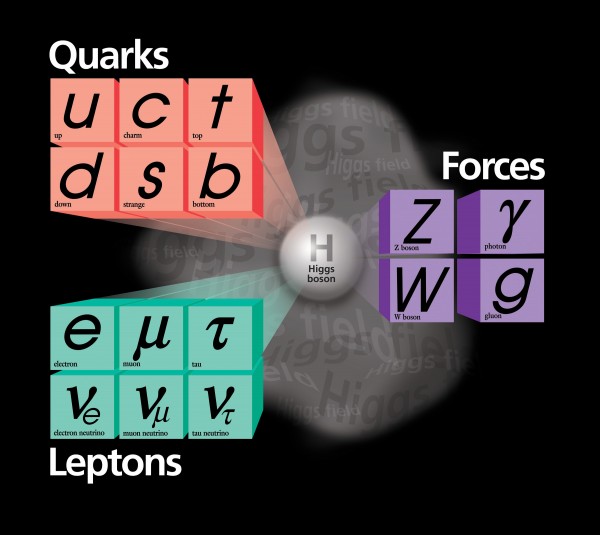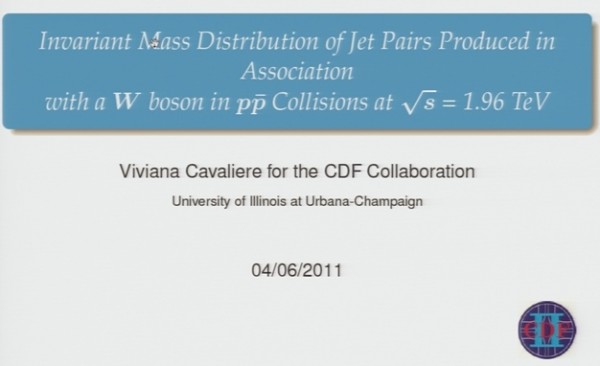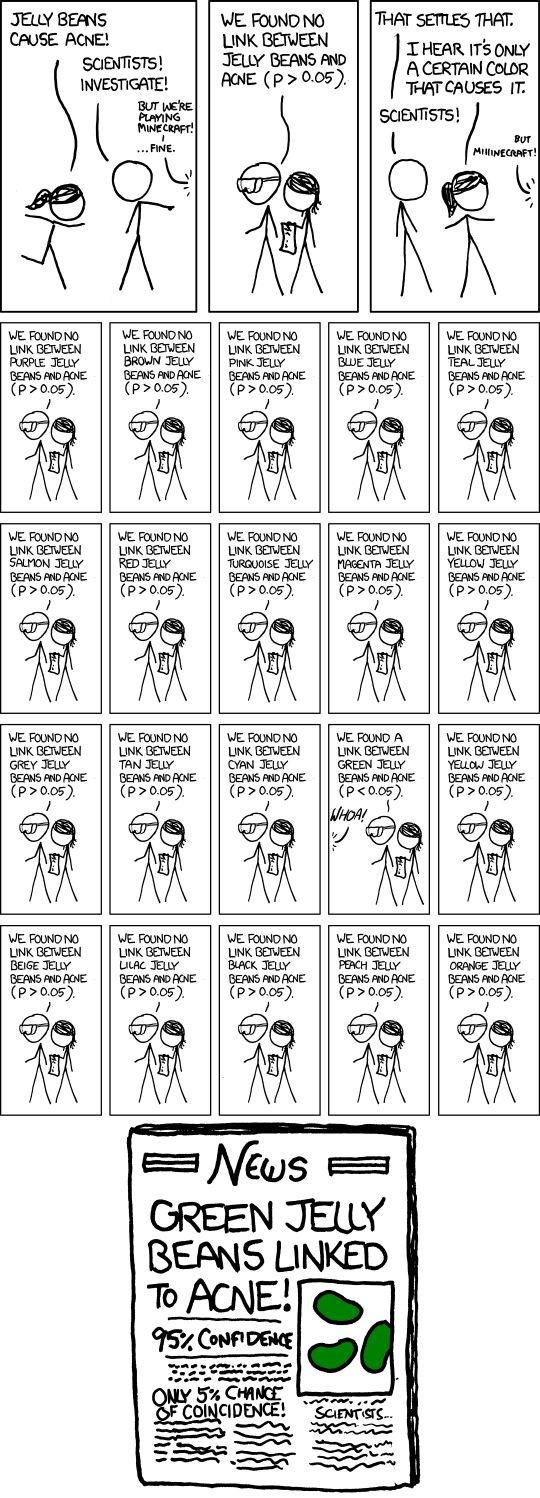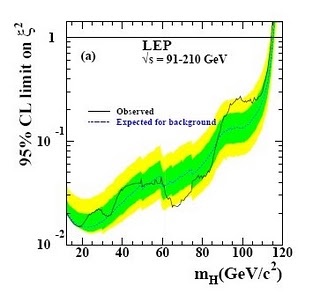"Although important nuclear physics work was to go on in laboratories such as ours had become - and we had to cut down to a lower energy group - it was not fundamentally opening up new insights on the structure of matter. That required you to be in a higher league." -John Henry Carver
Okay, before we get into speculating, the short answer is maybe. And that's amazing! Let's recap the basics, and bring you up to speed of what could be the Tevatron's last -- and possibly greatest -- hurrah.
This is the Tevatron. For decades, it was the most powerful particle accelerator in the world, creating proton-antiproton collision at speeds exceeding 99.99% the speed of light in vacuum! Recently, however, it's been relegated to #2 in energy behind the new Large Hadron Collider (LHC), whose protons can travel that tiny bit extra 0.007% faster than Fermilab's can. The Tevatron soon will also fall to #2 in terms of the total number of collisions it has collected data on, and its run is imminently coming to an end.
The accelerator at Fermilab has been absolutely amazing, however, make no mistake.

This is the standard model of elementary particles. Three of them: the bottom quark, top quark, and the tau neutrino, were first discovered at Fermilab!
Additionally, Fermilab has discovered a myriad of composite particles -- mostly combinations of quarks and gluons -- and is famous these days for competing with the LHC to find the Higgs.
And if you've ever worked in particle physics, today's xkcd comic will be all too familiar to you.
After all, we have two things working against us:
- We are looking for a huge number of possibly interesting effects, and
- we get a whole bunch of "junk" data, that we have to make responsible cuts to in order to not have it swamp our signal.
There are dangers to both of these. First off, these particles and the laws governing their interactions tell us what they ought to do, on average. In other words, let's say I make a Z0-particle. I know that 3.33% of the time, it should decay to an electron-antielectron, 3.33% it should decay to a muon-antimuon, and 3.33% to a tau-antitau (and 90% to other stuff, which isn't important for now). Now, if I make 100 Z0, and I see that 3 decayed to electron-positrons, 2 decayed to muon-antimuons, and 6 decayed to tau-antitaus, what does that tell me?
Well, according to statistics, this particular combination is pretty unlikely, and so if this were my only data, I would conclude that this could be a sign of new physics! Of course, this could also be a sign that I need more data, and that if I did 1000 trials, I might get numbers where this effect disappears.
There's also a problem with cuts: if I make irresponsible cuts, I could, for instance, be throwing away some real events that made this effect disappear, also. This problem gets worse as you get closer to the energy limit of your accelerator. Those of you who've followed high-energy physics for some time may remember this...
LEP was the Large-Electron-Positron collider (which was the predecessor to the LHC, the Large Hadron Collider). And LEP's energy topped out at 114 GeV. And wouldn't you know, they saw some interesting effects right up at that high-energy limit! Some people still claim that the Higgs is probably right there, at about 114 GeV, and if we had only spent a few more months running LEP at full speed, we would've discovered it long ago.
But it could also be a problem of either low statistics or of irresponsible cuts. We normally demand a certain level of significance in particle physics far beyond what other disciplines require: 5 standard deviations before a result is considered "robust". A result three standard deviations away from normal is interesting, but requires a lot more verification, and announcing a two-sigma (or two standard deviation) result should get you laughed out of the room.
And so today, there was an announcement and a talk given by Viviana Caviliere, and I went to download the slides...

Fermilab has released an interesting result! It's being reported in the New York Times, there's a paper on arxiv.org, Sean Carroll has a take (and more selected images than I've pulled), and you yourself will be able to watch the talk here when it's posted. What's the deal?
Well, based on the standard model, when we smash protons and antiprotons together at various energies, we should produce jets of particles, W's, and Z's in certain proportions, and carrying certain proportions of the energies. They are shown in the graph below in the variously-colored sections.
But that isn't what Fermilab saw! Up in between the energies of 120 GeV and 160 GeV, it saw an excess of events, as fitted to that slightly raised blue line!
First off, it's important to state right now what it isn't: this is not the Higgs.
But it could be indicative of a different particle, one we didn't anticipate!
But you've been paying attention, and so I know you're dying to know the answer to this: how significant is this result?
Well, it's a three-sigma result. Which means, if this is a real effect, we're seeing the first signs of it. But it could also mean that when we collect more data, or when we go back and redo our cuts, this effect will disappear. And this "raised blue bump"...

...will fall back down to the red line.
Of course, if it is real, the big question is, what kind of new physics or new particle is this showing us? I am sure there will be new papers with new theories out any day... but this is honestly what particle physics sorely needs right now, data pointing us in new, interesting directions! Time will tell whether this result holds up or not, but if it does, it could be Fermilabs last, and greatest, most unexpected discovery!







Cool. Can I call dibs on the name of this new particle?
No, because I already called dibbs on naming it.
So who ordered this one?
anyone got a good rule of thumb take on how often 3 sigma results turn out to be real in this kind of setting?
exciting for sure
Fascinating post, Ethan. Thanks for posting this and the additional explanatory links.
Big deal. I made 12 tau-antitaus in my garage over the weekend. I use 'em to get free cable.
Can someone dumb this down for me? Use extremely short, one syllable words. ;)
@SoulmanZ:
A 3-sigma result means there's a 1 in 370 chance of this being a fluke. That's small, but not so small as to be impossible. So more results are needed.
http://en.wikipedia.org/wiki/68-95-99.7_rule
never mind calling dibbs on naming the particle, lets just all agree to call it the dibbs particle :-)
feralboy12:
Well, it doesn't appear to be a muon.
There's a particle called "dibbs?"
Physics joke:
A Higgs Boson walks into a bar. The bartender looks up and says "Hey! You just missed some guys who were in here looking for you!"
Shouldn't the Large Hadron Collider have seen this effect also?
Very exciting, I have been waiting for these results for over 10 years. Please see equation 18 in my paper http://theoryofeverything.org/TOE/JGM/ToE.pdf which predicts a Higgs sector boson at 148 GeV.
Wow. Some really excellent work.
I'm hoping these new observations for a new particle get 5-sigma'd. Theorist need something big to wrap their minds around; a flurry of experiments will follow.
Right about now, politicians should be scrambling to extend the funding for Fermilab and kicking themselves in the pants for not funding the Superconducting Super Collider.
Here's an update on the Superconducting Super Collider.
http://www.physicscentral.com/buzz/blog/index.cfm?postid=66595554487837…
Someday, we'll spent $50 Bil on the son of SSC and it will be worth every penny.
Science is "the" growth industry. It attracts and grows talent and innovation in science, technology, business and the arts. Infrastructure like the SSC is like an island in the middle of the ocean. The vast ocean is liquid desert nearly empty of fish; but around an island life is teeming, diversifing, multiplying. The SSC would have been such a scientific island. The LHC will be.
Consider a 54 mile circle of Texas cow pasture. Which do you think is the better engine of growth for the community, country and world?
A) cow pasture
B) casino
C) prison
C) son of Superconducting Super Collider (SSC)
What else are you going to build in the middle of nowhere?
I can see the coffee cups and T-shirts now:
"It's 150 GeV; do you know where your particles are?"
Gregory @14:
Are you saying Ethan is wrong and this is the Higgs?
regarding #14, J Gregory Moxness's 2007 paper
In light of the experimental results, Moxness's method and equation needs to be understood and evaluated by an expert.
He is difficult for a layman such as myself; but slowly I understand his introduction; it is an interesting idea to which I agree. I barely can follow (or not) his derivations.
Regarding the integrity of his calculations. He says of the mass of an electron (equation 45): "Unfortunately, this interesting prescription is significantly outside the very small experimental standard error of 170 ppb by a factor of 3470." So, he has the integrity to point out his theory's shortcomings.
His equation 18 gives the mass of the Higgs so simply that it reminds me of formula for Planck dimensions. Thus even if his theory is incorrect; this formula seems to be pointing to a theoretically interesting particle.
Search yields little about him; he is fringe; but knowledgable and with integrity.
"Okay, before we get into speculating, the short answer is maybe. "
I thought the whole point of this was to be able to do "maybe!" ;)
To Vicki (#16)
no - what I am saying is the Higgs mechanism per SM is not well understood and may not be one particle, but a Higgs sector (per A. Lisi). Of course, this it is TBD.
To Knightly (#17)
Your reference to the error bars on eq. 45 is not related to the Higgs calculation, but to the conjecture of simple Fine Structure relationship to e ,which I agree (and point out) is very speculative. Eq. 18 (and indeed, my entire UoM) is based on the precise experimental measure of e.
I'm putting my money on this being a desperate PR gambit. They probably get blips like this every now and then, and they decided to publicize the hell out of this one in a last ditch effort to keep Tevatron operating.
Not that I blame them! Sure, the LHC will be able to do things Tevatron can't, but you can collect twice as much data within Tevatron's capabilities if you keep it open. And as to cost-benefit, well... the amount of money spent in Iraq in ONE DAY would keep Tevatron open for EIGHT YEARS.
In a nutshell: I think they are deliberate hyping up a non-result in the hopes of getting some press and saving the project. And god I hope they pull it off!
I have an explanation for this new particle: since they are out of money in September, they decided to discover a phony particle to make the sponsors give them extra fund. (just joking.)
@15 Best of all, with the tunnel underground and just a few support buildings scattered around its circumference on the surface, you don't even need to get rid of the cow pasture!
@Ethan What's going on with Tevatron after shutdown, anyway? Are there plans to refit it into a more powerful machine, like how LHC is in LEP's old tunnel? I did read somewhere that some scientists thought LHC was as powerful a baryon collider as they'd need, and newer machines should be electron-positron colliders, which are better designed as linear....
Plus, y'know, never slime a guy with a positron collider, right?
well, if the experiment suddenly starts producing new results with the same input from the human end, it's more logical to assume that the other input, the one from Sol, is the reason for the different result. N'est Pas?
@Raskolnikov
The probability that this is a fluke is not known. 1 in 370 refers to the probability of obtaining such a result in a test, provided that the null hypothesis (no new physics here) is true. This is not splitting hairs. I'd be more than happy to put my $1 on the null hypothesis if you give me those odds.